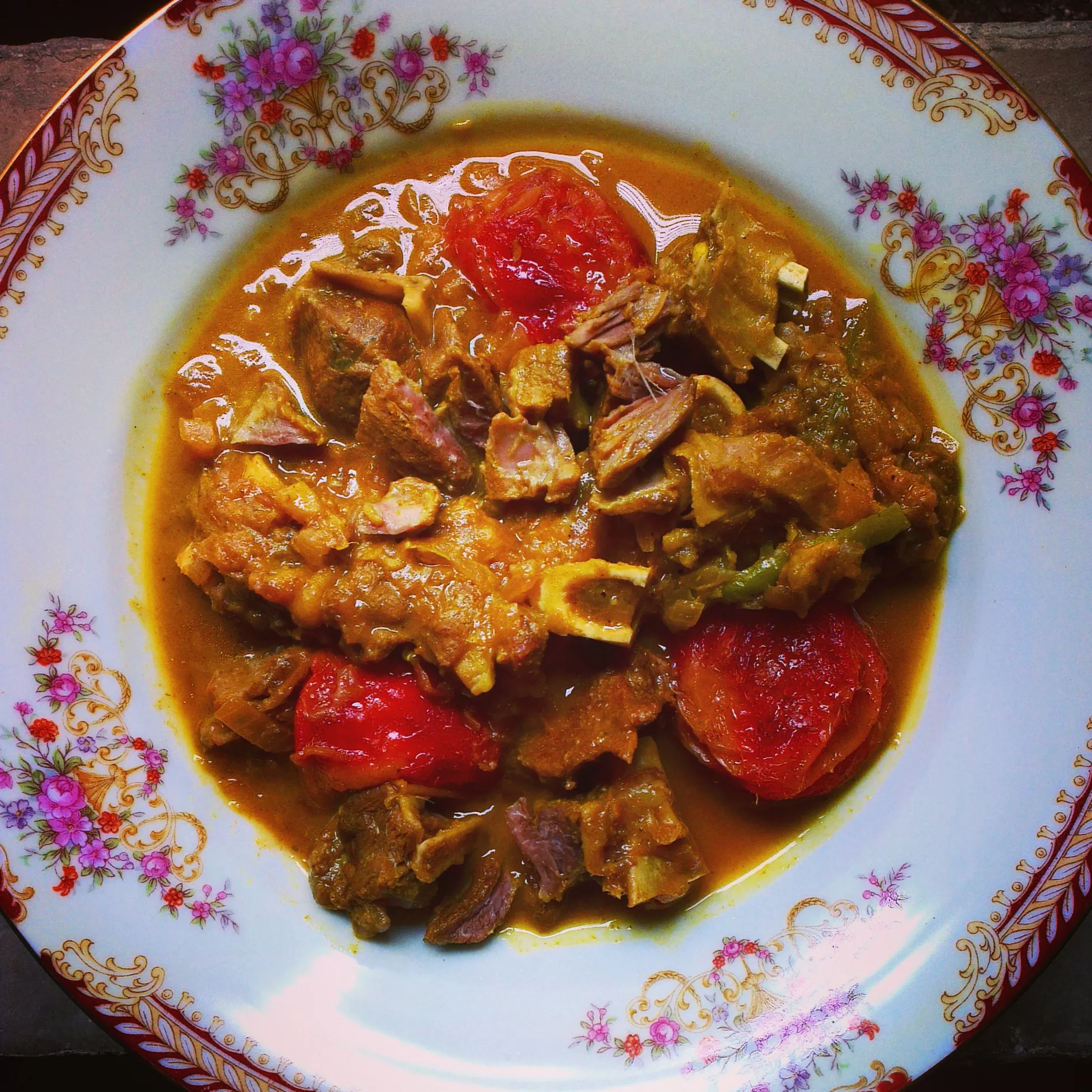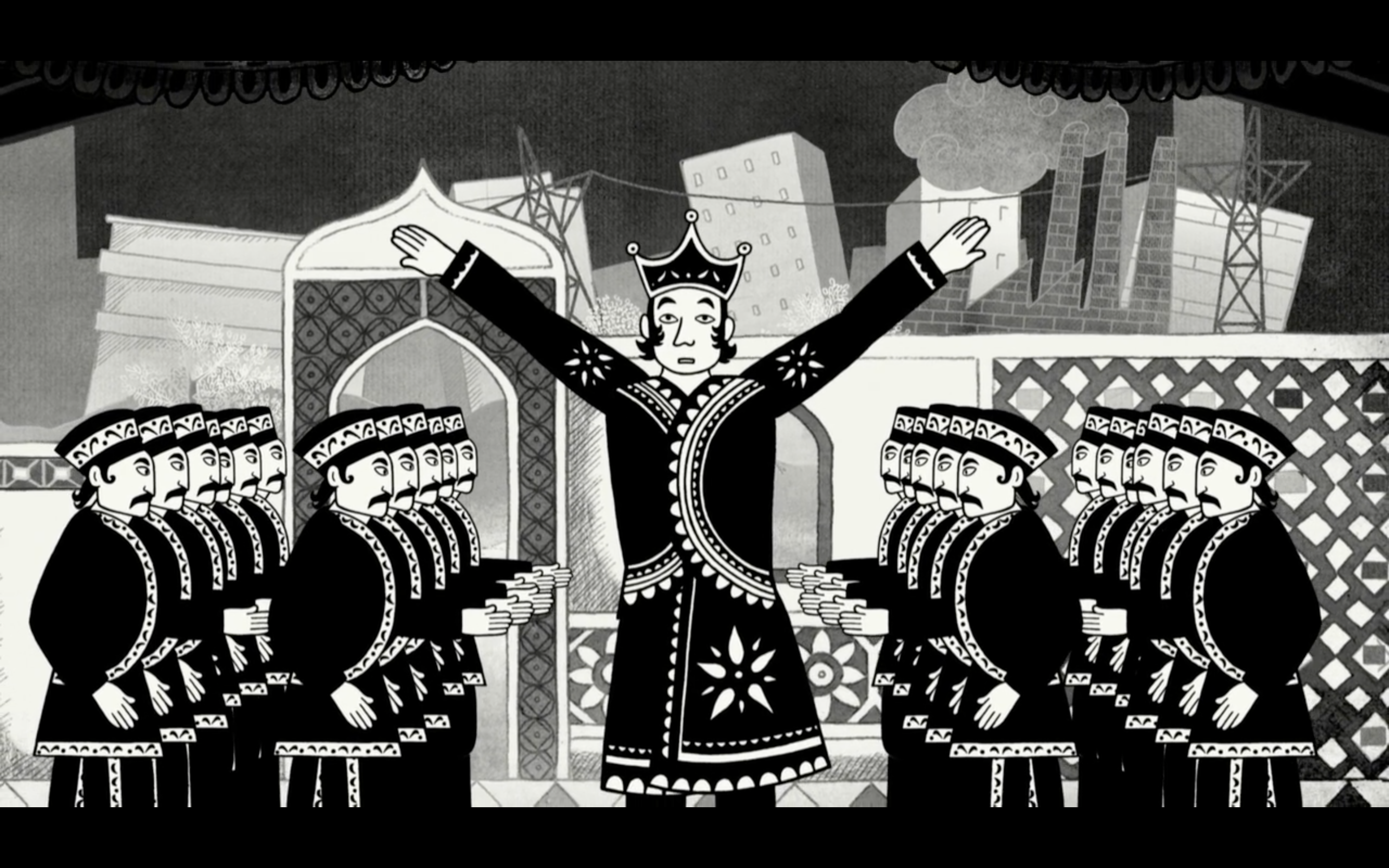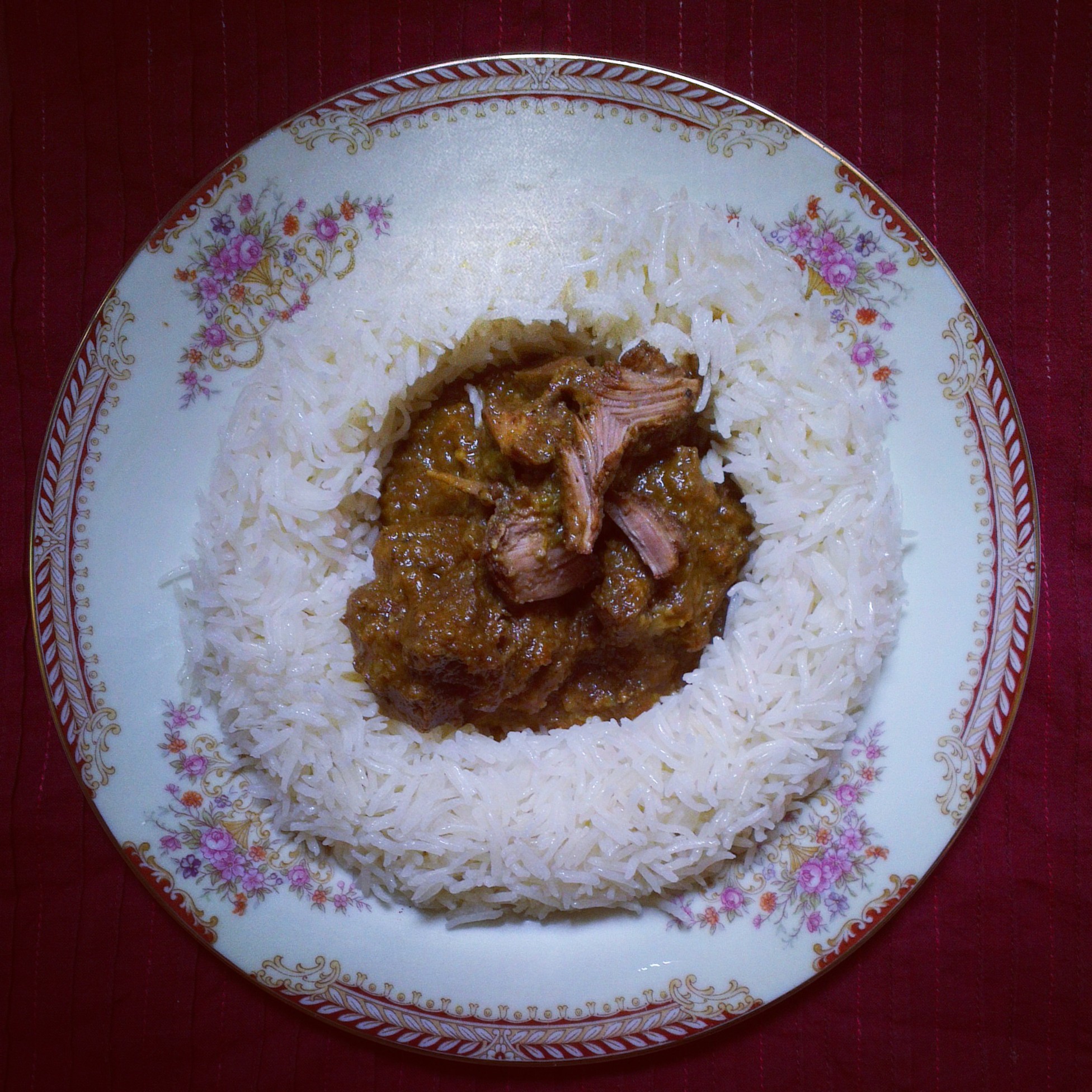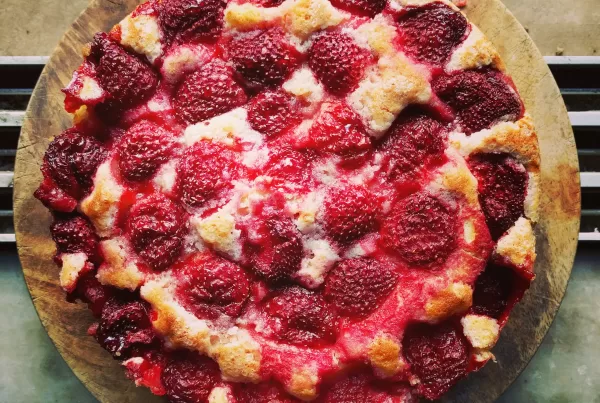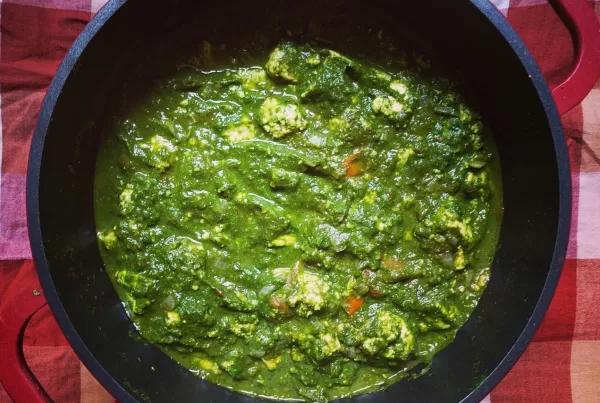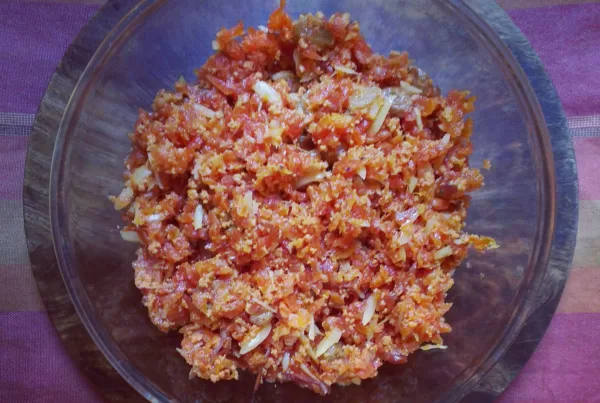I’ve never tasted a dish quite like this one before. It has a flavour profile quite unlike anything I’ve ever cooked or had at a restaurant. The sweet sourness of the plum (quite different from the sweet and sour of eastern flavours I’m more used to) melds with the umami richness of the meat in way that can’t be described with words.
I remember reading this big hardbound book of fairy tales from around the world while I was growing up; some of the stories from it were Persian. It painted this image of a mysterious, fantastic land of graceful minarets, curved swords and flying carpets. When I think about it now, those stories were easier to identify with, possible because I was also brought up in a land of graceful minarets and beautiful, albeit grounded carpets. That sense of mystery eventually grew into the one that most of the world regards that part of the world with, even though it’s still far from a Dark Continent. One of my favourite graphic novels, Persepolis (which was made into a movie, image below) offered a peek into a grim reality of the transition the land went through.
A couple of years ago I started work on a massive project that involved drawing out and design of a family tree that spanned well over ten generations of Parsee immigrants in India. The project offered me a special glimpse into the thousand year history of the Parsees and their culture and cuisine. It’s hard to miss their influence in Bombay, as many of its older buildings were built by them and often bear iconography and relief of icons of Zoroastrianism.
I’d read much about Persian cuisine (separate from Parsee cuisine, which I reckon is a derivative of it evolved with Indian influences), with its usage of fruits in rich meaty curries, kebabs and other dishes, but I never got around to venturing an attempt at any of these preparations.
A few days ago, I signed up for the Indian Food Blogger’s Meet happening in Bangalore, where Kitchenaid (one of their sponsors) announced a competition where the main ingredient was to be plums. This immediately triggered a memory of this dish I’d heard of long ago (so long ago that I can’t remember where) that I knew was a curry of lamb cooked with plums. I looked high and low (on the internet) for the recipe, but I couldn’t find one that resembled the faded memory of the one I’d come across.
I’d attempted a mutton curry a few weeks back thanks to a mutton-curry-craving I’d suddenly developed. The base for it was a recipe narrated to me by Revati, of Hungry & Excited notoriety. I added my own touch to the recipe with a dash of balsamic vinegar, which always goes well with richer meats (and some tomato pureé, which gives it another dimension of sweet tang).
I used what I’d learnt from that recipe to come up with the recipe you will see below. The plums provide a tartness and sweetness in a similar vein to the flavour the balsamic vinegar and tomatoes brought in. It really isn’t that unusual to use fruit in curries. The tomato is also a berry after all. A lot of south Indian recipes use mangoes and other fruits in large diced chunks, adding bursts of precisely muted sweetness to the spice of curries.
The proportion of fruit used in this recipe is much smaller though. A little goes a long way with plums because of its concentrated flavours of sweet sourness. You have to remember to salt the curry generously after to balance out the tang and sweetness of the plums. This is something you’ll have to do to taste, depending on how sweet or sour the plums you use are.
The plums, being such thin skinned and soft-fleshed fruits, disintegrate into nothingness quite quickly, which is why I decided to also put in a few whole plums while the curry cooked, as markers, leaving no ambiguity that this is a plum-based curry. They also form a secondary texture, a different “meat” of sorts in the dish. They absorb the spice and chilli and turn into an entirely new (to me) form of savoury flavour with an undertone of sweetness. If you don’t want to use the plums whole, use only four plums, diced well. Using all six plums diced into the curry would make it way too sweet.
You could also use whole garam masala (a few cloves, pods of cardamom, nutmeg and cinnamon) at the beginning of the cook for a flavour boost. They would go in with the bayleaf, right at the beginning.
Since the competition’s brief was to create a recipe which was easy to make, I haven’t devised a super complicated method to put this dish together. I have also written out the slightly more complicated (but totally worth the effort for the flavour it brings) method with a marinade at the bottom of this article.
This is quite certainly not an authentic Persian recipe, but I know that the flavour is quite far from any Indian curry I’ve ever cooked. Maybe one day I’ll travel to Iran and sample the real thing in the land that it belongs to and make the necessary adjustments to fine-tune this recipe closer towards the inspiration that begot it.
The Recipe
Ingredients
500g mutton/lamb
5 large plums diced
5 large prunes/plums whole
1 large onion
3 chillies
1 bayleaf
4 cloves garlic
1″ piece of ginger
⅓tsp turmeric powder
2tsp cumin powder
1tsp chilli powder (as per spice threshold)
3tsp coriander powder
1tsp garam masala
Salt to taste
1-2 tbsp ghee/cooking oil
Method
- Make a paste of the ginger and garlic. Alternatively, you could also use around two teaspoons of ginger garlic paste, but fresh ginger and garlic always tastes better. Dice the onions as finely as possible. Slit the chillies along their length.
- Heat the oil in a crockpot and add the chillies and bayleaf. Then add the onions and ginger-garlic paste. Cook till the onions start to colour.
- Add the spices and cook till you see the oil stick to the crockpot or vessel.
- Add the meat (make sure it’s at room temperature at this point) and stir till its evenly golden/pale on the outside.
- Add the chopped plums, stir and then add just enough water to submerge the meat. Cook for 40 minutes.
- Add the whole plums and cook for another 15-20 minutes.
- Season with salt and serve.
An alternative way (sans plums):
The recipe I’ve transcribed above is a quick and simple way of making this curry. If you have more time, you could marinade the mutton in with a mix of a handful each of mint and coriander leaves, green chillies, a teaspoon of toasted cumin seeds, ginger and garlic (ground to a paste) with two or three large tablespoons of yoghurt. Make sure the marinade gets to every nook and cranny of the meat. Marinade overnight or for an hour minimum.
The picture of mutton curry just above this recipe was actually made without plums. I added a dash of good balsamic vinegar and a little bit of tomato purée to tenderise the meat. Of course, this would mean that you wouldn’t have to add the ginger garlic or remaining ingredients while cooking the onions later.


